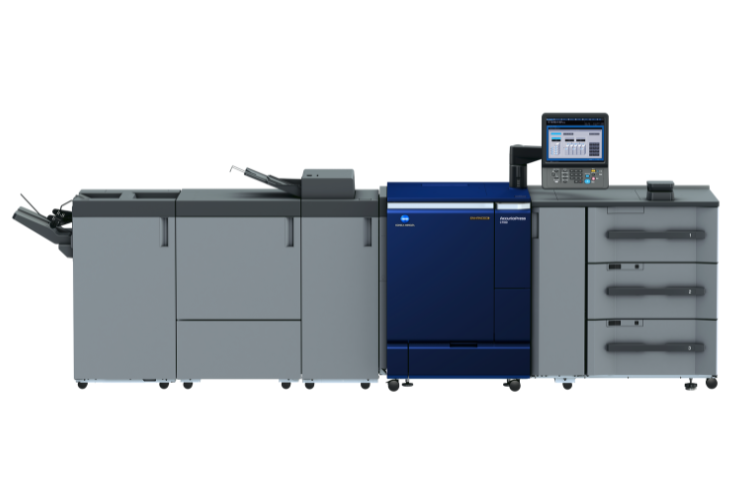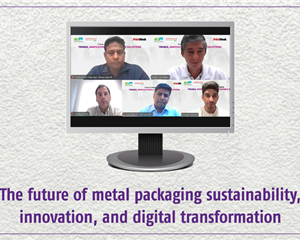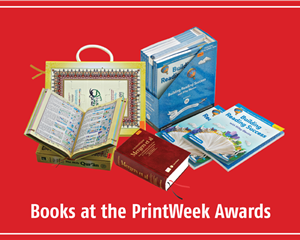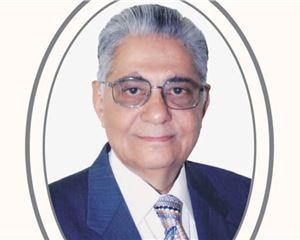Inside the AccurioPress C7100 Enhanced kit
Manish Gupta, head, product life cycle and solution consultancy division at Konica Minolta Business Solutions India, explains how the AccurioPress C7100 Enhanced is poised to redefining digital print through automation, sustainability, and versatility that challenge offset and screen printing in India’s evolving market
10 Oct 2025 | By Noel D'Cunha
When Konica Minolta introduced the AccurioPress C7100 Enhanced in India in July this year at the PrintExpo in Chennai, it was touted to be more than an upgrade. For Konica Minolta, it was a statement about where print production is heading, towards automation, sustainability, and smart integration that blurs the line between offset quality and digital agility.

AccurioPress C7100 Enhanced
Manish Gupta describes the new press as a platform built for modern print realities. “The AccurioPress C7100 Enhanced combines our Gamma 13 colour management and IQ-501 Intelligent Quality Optimizer to make colour consistency a fully automated process,” he says.
Gamma 13’s real-time colour algorithm measures and refines profiles as the press runs, ensuring consistent reproduction across a wide variety of media. The IQ-501 performs density, registration, and defect corrections in real time, creating what Gupta calls a “proofless production environment” that removes manual intervention.
The result is predictable colour and reduced waste. “For print service providers, this means faster approvals, fewer reprints, and consistent brand colours across every run,” he explains. The automation narrows the quality gap with offset while outpacing it on setup time, turning what used to be a labour-intensive process into a streamlined digital workflow.
Versatility for India’s diverse market
India’s print industry is expanding steadily, projected to grow from INR 260 billion (USD 3.09 billion) in 2023 to over INR 288 billion (USD 3.43 billion) by 2026. The growth is driven by packaging, regional marketing, and short-run commercial print. Gupta notes that the C7100 Enhanced is engineered to serve all these segments simultaneously.
“The press supports everything from 52 to 400 gsm and sheets up to 1,300 mm,” he says. “That allows our customers to print prototypes, short-run packaging, book jackets, wraparound labels, and long-format marketing pieces on the same platform.”
This flexibility is especially relevant in India, where brands frequently demand regional SKUs, seasonal promotions, and customised editions. Gupta adds, “Offset or screen printing would require separate setups and plates, but with the C7100 Enhanced, printers can produce these variants quickly, cost-effectively, and with consistent quality.”
By combining substrate versatility with inline finishing, printers can reduce capital costs and operate leaner production lines. The result is faster time to market and the ability to compete for premium work without the overhead of traditional processes.
Sustainability and energy efficiency
Environmental responsibility is no longer a luxury; it is an operational necessity. Gupta points to the Simitri V toner as a key contributor to sustainability. “Simitri V is a biomass-supplemented, low-temperature fusing toner,” he explains. “Lower fusing temperatures directly reduce electricity consumption, which in turn cuts Co2 emissions.”
Because the toner fuses at lower heat, it also supports delicate and recycled materials. “This matters in packaging and textile-adjacent printing, where substrate sensitivity is high,” Gupta says. “Simitri V reduces thermal stress while maintaining fine detail and colour stability.”
For brands increasingly judged by their environmental footprint, these features enable print service providers to deliver sustainable outputs without compromise. “Digital printing with Simitri V becomes a genuinely greener alternative to processes like offset or screen, which require significantly higher drying or curing energy,” he notes.
Automation that rivals offset
Offset printing remains the benchmark for high-volume efficiency, but automation is rewriting that equation. The AccurioPress C7100 Enhanced runs at a consistent 100 images per minute and integrates seamlessly with Konica Minolta’s AccurioPro workflow suite. “AccurioPro automates job submission, colour management, preflight, and RIP-to-print processes,” Gupta explains. “It removes manual steps that add both time and variability.”
This automation pushes digital production deeper into offset territory. When setup times, plate costs, and labour are factored in, Gupta argues that “many medium-run jobs become more economical on digital.” He continues, “With frequent revisions, regional variants, or variable data, digital presses deliver not only cost savings but entirely new revenue models.”
AccurioPro Flux extends this automation further by offering Web2Print integration. “It helps printers build online storefronts and automate order-to-production workflows,” Gupta adds. “That is essential for businesses expanding into B2C and custom print-on-demand models.”
Replacing and complementing screen printing
As screen printing evolves into niche industrial uses, the C7100 Enhanced bridges the gap for short-run and speciality work. Its S.E.A.D. X imaging engine enhances tone reproduction, halftone stability, and sharpness on difficult substrates.
“The C7100 Enhanced can print on textured, embossed, and recycled stocks with remarkable consistency,” Gupta says. “Applications that once required screen printing can now be done faster, with greater flexibility and less manual setup.”
Rather than displacing screen or offset outright, Konica Minolta’s approach is complementary. “Screen remains ideal for very high-volume or specialty finishes, but the C7100 Enhanced takes over shorter runs and variable designs that keep those traditional lines occupied,” he explains. This hybrid production model maximises equipment utilisation across print floors and enables printers to offer a wider range of services.
Inkjet-like performance from a toner platform
While the C7100 Enhanced is a toner press, Gupta describes its operation as “inkjet-like” in responsiveness. “Enhanced sensors detect media properties before printing begins, allowing dynamic adjustments that prevent misfeeds and maintain alignment,” he says. “It behaves with the speed and agility customers expect from inkjet, while preserving the image consistency and finishing compatibility of toner.”
By combining these sensors with AccurioPro automation, the system reduces make-ready time and waste, boosting real-world productivity. For operators, it translates into faster job turnovers, fewer stoppages, and consistent output across shifts. “It is a press designed to run intelligently rather than depend on manual supervision,” Gupta adds.
Resilient supply chain and service reliability
With the global shift from “just-in-time” to “just-in-case” logistics, supply chain reliability has become a competitive differentiator. Gupta explains that Konica Minolta’s integration of consumable management and service infrastructure ensures uninterrupted operations.
“Printers can monitor consumable levels remotely, automate ordering, and even have the machine raise a service call if required,” he says. “Our regional warehouses and service network in India ensure quick delivery of toners and spare parts.”
Compared with offset or screen printing, which rely on plates, inks, and chemicals that may have long or variable lead times, digital simplifies logistics. “It reduces the need for large stock buffers and makes production more predictable,” Gupta says. “This reliability becomes essential for printers who must meet tight deadlines for e-commerce or fast-moving consumer brands.”
Empowering small and medium enterprises
One of the C7100 Enhanced’s most profound impacts lies in how it levels the playing field for small and medium print businesses. “The IQ-501 automates critical quality controls that used to require highly skilled operators,” Gupta says. “SMEs can now achieve offset-level consistency without needing offset-level manpower.”
By automating calibration, registration, and defect detection, the press allows smaller teams to manage more work. “It frees operators to handle multiple machines or client interactions instead of manual colour checks,” he adds.
The efficiency gains are tangible. “You see less waste, faster setup, and consistent output regardless of who is running the shift,” Gupta notes. “That means higher productivity and better profitability per square foot of production space.”
A digital future shaped by flexibility
Looking ahead, the market direction seems clear. Smithers projects that India’s print sector will continue to grow through 2030, driven by packaging, short-run personalisation, and digital convergence. Gupta believes the C7100 Enhanced is built for this environment.
“The press supports a wide range of inline and near-line finishing,” he says. “This allows printers to move from imaging to finished product seamlessly, reducing touchpoints and human error.”
As digital demand grows, automation will become the baseline rather than a bonus. “Printers who can offer end-to-end digital production will capture a larger share of high-value work,” Gupta predicts. “The C7100 Enhanced enables exactly that by combining image quality, substrate versatility, and workflow intelligence.”
Offset will continue to dominate long-run labels and packaging, but the C7100 Enhanced opens new profit zones. “Printers can now produce short-run customised labels, premium cartons, and limited-edition designs profitably,” Gupta explains. “With variable data and regional language variants, they can deliver personalisation at scale.”
These capabilities create opportunities for higher-margin work such as luxury brand prototypes, regional marketing campaigns, and personalised packaging for e-commerce.
“Even small batches, when aggregated across multiple customers, can outperform the revenue of traditional offset jobs,” Gupta says. “From colour accuracy to workflow automation, every part of the C7100 Enhanced is designed to make digital more competitive, not just convenient. It empowers printers to do more with less, less waste, less time, and less energy. And that is what the future of print will look like in India.”












 See All
See All